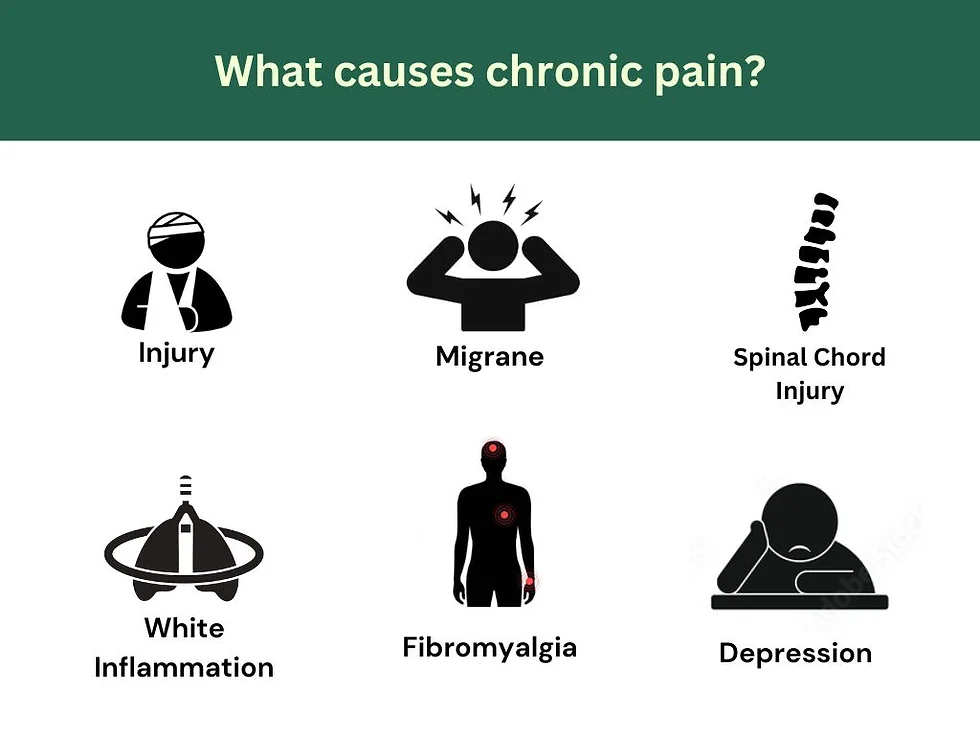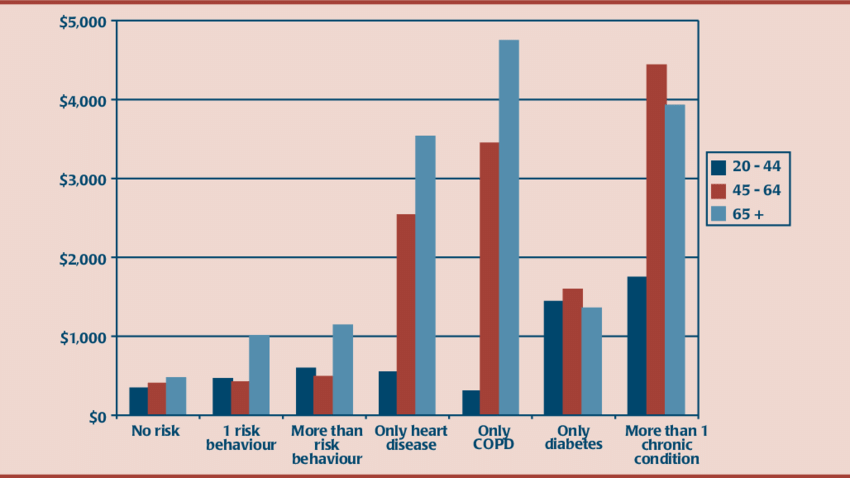Living with chronic pain is more than just a daily struggle with discomfort. It’s an ongoing challenge that can affect every aspect of your life, including your financial stability. Chronic pain conditions such as arthritis, fibromyalgia, and chronic back pain are not only debilitating but also carry significant economic burdens. These conditions often require long-term medical care, medications, and various therapies, all of which can quickly add up in terms of costs.
Imagine juggling your daily responsibilities while worrying about how to afford your next prescription or physical therapy session. It’s a tough balancing act that many people with chronic pain face. This is why understanding and managing the costs associated with chronic pain is crucial. Not only can it help alleviate some of the stress associated with your condition, but it can also improve your overall quality of life.
In this comprehensive guide, we’ll explore various aspects of managing chronic pain costs. From understanding the economic burden to finding cost-effective strategies and resources, we aim to provide you with practical advice to help you navigate this challenging journey.
Understanding Chronic Pain
Chronic pain is defined as pain that persists for 12 weeks or longer, despite treatment. It can arise from an initial injury or infection, or there can be an ongoing cause of pain. In some cases, the pain persists without any clear cause. There are various types of chronic pain, including:
- Nociceptive Pain: This results from tissue damage. For example, arthritis and injuries cause this type of pain.
- Neuropathic Pain: This is caused by nerve damage or dysfunction. Conditions like diabetes or shingles can lead to neuropathic pain.
- Mixed Pain: This includes elements of both nociceptive and neuropathic pain. Conditions such as lower back pain can involve both types.
Common Causes of Chronic Pain
Chronic pain can stem from numerous conditions, including:
- Arthritis: Inflammation of the joints causing pain and stiffness.
- Back Problems: Disc degeneration, spinal stenosis, or injuries.
- Migraines: Severe headaches that can cause throbbing pain.
- Fibromyalgia: Widespread musculoskeletal pain accompanied by fatigue.
- Multiple Sclerosis: A disease where the immune system attacks the protective covering of nerves.
- Cancer: Pain caused by tumors pressing on nerves or other body parts.
Understanding the type and cause of your chronic pain is the first step in managing it effectively.

How Chronic Pain is Diagnosed
Diagnosing chronic pain typically involves a combination of patient history, physical examinations, and diagnostic tests. Physicians may use imaging studies such as MRI or CT scans, blood tests, and nerve conduction studies to pinpoint the source of pain.
Economic Burden of Chronic Pain
Direct Medical Costs
Chronic pain can lead to substantial direct medical costs, including:
- Physician Consultations: Regular visits to general practitioners and specialists.
- Diagnostic Tests: Imaging, blood tests, and other diagnostic procedures.
- Hospital Stays: Admissions for severe pain management or surgeries.
- Surgeries: Procedures to address underlying causes of pain.
- Prescription Medications: Ongoing costs of pain relief and other medications.
Each of these elements can contribute to a hefty medical bill, particularly for those without comprehensive health insurance.
Indirect Costs
Indirect costs are often overlooked but are equally significant. These include:
- Lost Wages: Time off work due to pain or medical appointments.
- Reduced Productivity: Inability to perform at full capacity at work.
- Disability Accommodations: Modifications needed at work or home.
These financial strains can exacerbate the stress and anxiety that often accompany chronic pain conditions.
Emotional and Psychological Costs
Beyond the financial impact, chronic pain also has profound emotional and psychological costs. Living with constant pain can lead to:
- Depression: Persistent pain can cause or worsen depression.
- Anxiety: Fear of pain episodes and their impact on life.
- Sleep Disturbances: Pain often interferes with sleep, leading to fatigue.
- Decreased Quality of Life: Pain limits daily activities and social interactions.
Addressing these emotional costs is essential for comprehensive pain management.
Healthcare Costs Associated with Chronic Pain
Medication and Prescription Costs
Medications are often the first line of treatment for chronic pain. However, the cost of prescription drugs can be prohibitive, especially for those on long-term medication regimens.
- Pain Relievers: Both over-the-counter and prescription pain relievers.
- Anti-inflammatory Drugs: Medications to reduce inflammation.
- Antidepressants and Anticonvulsants: Often prescribed for neuropathic pain.
Exploring generic options and patient assistance programs can help manage these costs.
Costs of Physical Therapy and Rehabilitation
Physical therapy is a cornerstone of chronic pain management, but it can be costly. Regular sessions with a physical therapist, coupled with necessary equipment and home exercises, can quickly add up.
- In-Clinic Visits: Fees for physical therapist consultations and treatments.
- Home Exercise Equipment: Costs for purchasing necessary equipment for home use.
Specialist Consultations and Medical Appointments
Specialists such as rheumatologists, neurologists, and pain management doctors often charge higher consultation fees. Regular follow-ups and specialist interventions can significantly contribute to the overall cost.

Non-Medical Costs and Their Management
Lifestyle Modifications and Home Care
Adopting certain lifestyle changes can be beneficial but also come with costs:
- Dietary Changes: Special diets and nutritional supplements.
- Exercise Programs: Gym memberships, personal trainers, or specific exercise classes.
Balancing these costs with your budget is essential for sustainable pain management.
Assistive Devices and Home Modifications
Investing in assistive devices and making home modifications can improve your quality of life but can also be expensive:
- Mobility Aids: Walkers, wheelchairs, and canes.
- Home Modifications: Installing ramps, grab bars, or specialised bedding.
Alternative and Complementary Therapies
Many people turn to alternative therapies for relief. These can include:
- Acupuncture: Insertion of thin needles to relieve pain.
- Chiropractic Care: Spinal manipulation to reduce pain.
- Massage Therapy: Manipulation of muscles and tissues for pain relief.
While beneficial, these therapies are often not covered by insurance and must be budgeted accordingly.
Insurance and Chronic Pain
Understanding Your Health Insurance Coverage
A thorough understanding of your health insurance policy is crucial. Key points to consider include:
- Coverage Limits: Maximum amounts your policy will pay.
- Out-of-Pocket Maximums: The most you’ll pay for covered services in a year.
- Approved Providers and Services: List of healthcare providers and services your insurance covers.
Navigating Insurance Claims and Denials
Filing insurance claims can be complex, and denials are common. Strategies for dealing with this include:
- Keeping Detailed Records: Maintain thorough documentation of treatments and communications with your insurer.
- Understanding the Appeals Process: Familiarise yourself with how to appeal denied claims.
- Seeking Assistance: Patient advocates and healthcare providers can help navigate the claims process.
Tips for Maximising Insurance Benefits
Maximising your insurance benefits involves proactive management:
- Utilising Preventive Services: Take advantage of screenings and wellness programs.
- Coordinating Care: Work with a primary care physician to manage referrals and treatments.
- Reviewing Bills Carefully: Ensure accurate bills and Explanation of Benefits (EOB) statements.
Financial Planning for Chronic Pain Management
Budgeting for Medical Expenses
Creating a budget specifically for medical expenses can help manage costs:
- Tracking Expenses: Keep a detailed record of all medical-related costs.
- Setting Aside Funds: Allocate a portion of your budget for anticipated treatments and emergencies.
Setting Up an Emergency Fund
An emergency fund can provide a financial cushion for unexpected medical expenses:
- Regular Savings: Save a small portion of your income regularly.
- High-Yield Accounts: Consider high-yield savings accounts for better returns on your savings.
Exploring Financial Assistance Programs
Various financial assistance programs are available for those struggling with medical costs:
- Government Programs: Medicare, Medicaid, and other state-specific programs.
- Non-Profit Organisations: Many non-profits provide financial aid for medical expenses.
- Pharmaceutical Assistance Programs: Drug manufacturers often offer discounts or free medications for those in need.

Government and Community Support
Government Programs and Benefits
Several government programs can provide financial relief:
- Social Security Disability Insurance (SSDI): Provides income for those unable to work due to disability.
- Medicare and Medicaid: Federal and state programs that help cover medical costs.
- Veterans’ Benefits: Programs specifically for military veterans.
Community Resources and Support Groups
Local community resources and support groups can offer both emotional and financial support:
- Local Health Departments: Provide low-cost or free medical services.
- Community Clinics: Offer medical services on a sliding scale based on income.
- Chronic Pain Support Groups: Provide emotional support and practical advice.
Non-Profit Organisations and Charities
Non-profits and charities often provide grants and assistance for chronic pain patients:
- American Chronic Pain Association: Offers support and resources for pain management.
- Arthritis Foundation: Provides grants and financial aid for those with arthritis.
- Pain Relief Foundations: Various organisations offer financial help for pain management treatments.
Cost-Effective Strategies for Managing Chronic Pain
Preventative Measures and Early Intervention
Preventative care can significantly reduce long-term costs:
- Regular Exercise: Helps maintain physical function and manage pain.
- Healthy Diet: Supports overall health and can reduce inflammation.
- Stress Management: Techniques such as meditation and yoga can reduce pain.
Utilising Low-Cost or Free Resources
Taking advantage of low-cost or free resources can alleviate financial pressure:
- Community Health Clinics: Offer services on a sliding scale.
- Online Exercise Programs: Many free resources are available for at-home exercise.
- Family Support: Enlist the help of family members for home care and support.
Incorporating Self-Management Techniques
Self-management techniques empower you to take control of your pain:
- Pain Journals: Tracking pain levels and triggers can help manage pain.
- Relaxation Techniques: Deep breathing, progressive muscle relaxation, and guided imagery can help reduce pain.
- Education: Learning about your condition and pain management techniques can improve your ability to manage pain.
Future Trends in Chronic Pain Management
Innovations in Pain Management
Emerging technologies and treatments hold promise for more effective pain management:
- Neurostimulation Devices: Devices that use electrical signals to manage pain.
- Regenerative Medicine: Therapies that use the body’s own healing mechanisms.
- Personalised Medicine: Treatments tailored to an individual’s genetic profile.
The Role of Telehealth and Digital Health Tools
Telehealth and digital health tools are becoming increasingly important in managing chronic pain:
- Remote Consultations: Virtual visits with healthcare providers.
- Digital Monitoring: Apps and devices that track pain levels and medication usage.
- Online Support Groups: Virtual communities for emotional support and advice.
Policy Changes and Their Impact on Costs
Policy changes at the government and insurance levels can affect the cost of chronic pain management:
- Healthcare Legislation: New laws that impact insurance coverage and healthcare costs.
- Prescription Drug Pricing: Efforts to control the cost of medications.
- Disability Benefits: Changes to benefits and eligibility criteria.
Conclusion
Managing the costs of chronic pain is a multifaceted challenge that requires a comprehensive approach. From understanding the economic burden and healthcare costs to exploring financial planning and community resources, many strategies can help alleviate the financial strain of chronic pain. By being proactive and informed, you can navigate the complexities of chronic pain management and improve your overall quality of life.